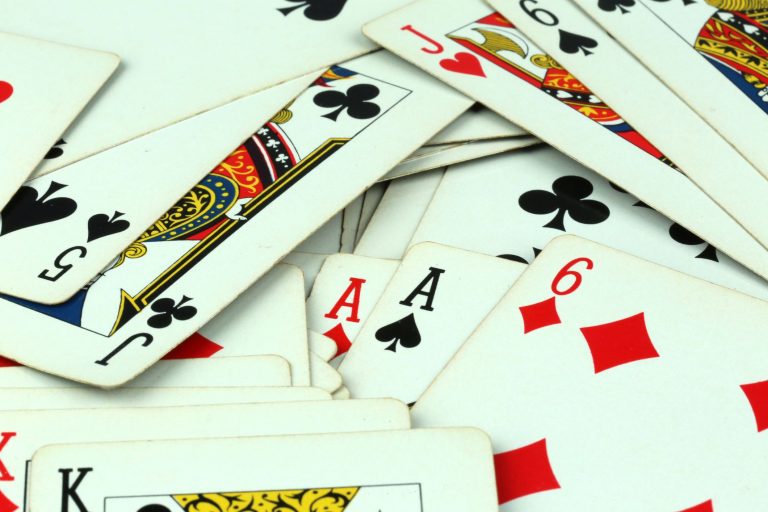Along with the traditional solitaire game, there are a number of other varieties that have garnered popularity on their own.
This guide teaches you how to play Free Cell Solitaire. One of the few Solitaire games with this unique concept is available.
One of the reasons why so many people like it are because it is so simple. Inexperienced players may find it difficult to grasp the fundamentals of Free Cell Solitaire due to the game’s unique mechanics.
The Setup:
You can see how many cards are in each Tableau pile by looking at the numbers on the top of the piles: 1, 2, 3, 4, 5, 6, and 7. The Free Cells and the Foundations are void.
The Aim:
FreeCell is won by placing all of your cards on the Foundations. In order to use the Foundations, you must place the cards on them in the following sequence: Ace 2, 3, 4, 5, 6, 7, 8, 9, 10. Jack Queen is the king of kings.
To do so, you may follow the steps outlined in the following section:
Allowed Moves:
It Is Possible to Move One or More Cards from One Tableau Stack to Another
To shift a pile’s top card onto a different table, you must have a higher-ranking and different-color top card on that table. There is, however, a limit to the number of cards you may move at once.
A player can move as many cards as the number of empty free cells and empty tableaus in their deck plus one.
As a result, if you have two vacant open cells, you may move three cards at once.
You can move five cards if all four of your cells are vacant. You can move eight cards together if you have three free cells and four empty tableaus. The game gives convenience by allowing you to move a large number of cards at once.
One card at a time is best, however with four ordered cards and three free cells you may move the three highest-ranking ordered cards to the free cells first, then move the fourth card, then move the three lower-ranking ordered cards back to the fourth card.
This is why the game enables you to move n+1 cards together, which is the number of free cells you have.
You May only Move One Card at A Time to A Free Cell
If a FreeCell is empty, you may always transfer the top card of any tableau pile, free cell, or foundation onto it. Only one card may be stored in a Free Cell at a time.
In the Free Cell, Remove One Card
If a card from a Free Cell is in the same suit and one higher than the Foundation’s top card, you may transfer it onto the Foundation.
Alternatively, if the card in the Free Cell is one lower and a different color than the Tableau pile’s top card, you may shift it to the Tableau pile.
On a Tableau pile, for example, you may transfer a red 5 from the Free Cell onto the current top card, a black 6.
You Can Move a Tableau Card to The Foundations
Double-clicking an individual card will automatically place it on the Foundation.
Tableau clears itself when the Free Cells are empty and all cards on the Tableau are placed in four piles and each pile is arranged in descending order with alternate red and black cards.
Undo
Unlimited rewinds are available in the game. Although each Undo is a new move, you should be cautious about how many you use if you’re attempting to win the game in the fewest number of moves possible.
Mastering Free Cell Solitaire: Tips and Tricks for Online Play
Free Cell Solitaire is a unique and entertaining variation of the classic Solitaire game that has gained popularity among card game enthusiasts. However, due to its distinctive mechanics, it can be difficult for inexperienced players to grasp the fundamentals of the game. If you want to improve your skills and master Free Cell Solitaire, here are some useful tips and tricks.
Firstly, always carefully examine the cards for the best possible moves. Take your time moving the first card you see. Instead, take your time to analyze the Tableau piles, Free Cells, and Foundations. Try to create a chain reaction by moving a card that opens up several other moves.
Secondly, make use of the undo feature wisely. While unlimited updos are available, using too many can make it harder to keep track of your progress and may prevent you from achieving your goals in the game.
Thirdly, use empty Free Cells wisely. Empty Free Cells provide flexibility in the game and enable you to move more cards at once. However, fill only some Free Cells early in the game, as you may need them later.
Finally, practice makes perfect. The more you play, the better you will become at Free Cell Solitaire. Don’t give up if you don’t win on your first few tries. Keep playing, learn from your mistakes, and try different strategies.
Conclusion
So if you’d want to compete against your finest games, this game keeps track of your actions and the amount of time it takes you to complete it.
For the time being, this data isn’t saved anywhere, but I plan to do so in the future.
Apart from that if you want to know about The Board Games Most Popular During the Monsoon then visit our Gaming category.
